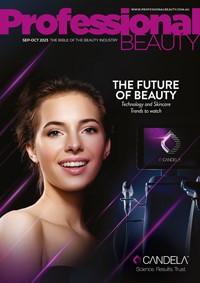Facial scars can have a deep impact on a person’s self-esteem and be difficult to treat. Acne scarring, one of the most common types of facial scarring, is a condition that is frequently treated by doctors of the Cosmetic Physicians Society of Australasia (CPSA), whose members specialise in non-surgical cosmetic medicine.

There are now a range of products and procedures that can help reduce the appearance of facial scarring. Continued technological development in this area of cosmetic medicine has also seen these treatments become increasingly effective and affordable.
Dr Susan Austin, spokesperson for the CPSA, says: “Scars become permanent features of the skin, but the appearance of some scars may be significantly reduced with the use of lasers and other forms of nonsurgical treatments including dermal fillers, skin needling and topical programs that stimulate collagen growth. Previously, there were few options to effectively treat facial scars but we’ve seen big improvements thanks to the development of fractionated laser technology,” said Dr Austin.
Fractional lasers treat the skin by causing thousands of tiny micro-holes in the skin, similar to a digital photo, sending heat to the deeper layers of skin to stimulate collagen. This new collagen grows in place of the scar causing the skin to appear smoother and plumper, thereby improving the appearance of scars, as well as removing fine lines and wrinkles.
Another treatment for facial scars is skin needling. This procedure involves the use of a Dermaroller – which looks like a small paint roller fitted with small needles – that is rolled across the skin’s surface, piercing small holes into the skin and underlying tissue. Skin needling works to stimulate scar tissue within the skin to help produce collagen and reduce the appearance of scars.
Similar to this, is also a more targeted tool called the Dermapen. “The Dermapen is similar to the Dermaroller but it involves ‘electric needling', which uses 11 tiny needles to penetrate the skin more deeply and less traumatically than the Dermaroller. Local anaesthetic is normally applied before the procedure. I have seen excellent results using this device, not only with scarring but also with stretch marks and pigmentation. It can also be combined with an injection of Platelet Rich Plasma (PRP) to further improve results. PRP is where a patient’s blood is taken and then spun down to create platelet rich plasma which is then injected into the scar,” Dr Austin said.
In recent years, dermal fillers and Botox have also been used to reduce the appearance of scars. The procedure involves injecting a filler directly into a line or groove to help fill a scar while Botox may be used to relax the tissue. As the effects of Botox and some fillers reduce over time, regular treatments may be required to maintain results.
Other treatments for facial scars include:
- Microdermabrasion, which removes the outer layers of the skin’s surface and stimulates skin collagen; and
- Silicone sheets, gels and sprays, which are applied or sprayed onto the scarred area to promote skin rejuvenation and smooth out the imperfections in the skin by hydrating and softening it.
“Often, a combination of procedures will be used to tailor the treatment to an individual patient. Topical collagen stimulators such as prescription Vitamin A and C formulations may also be beneficial to some patients,” said Dr Austin. “While acne scars are the most common type of facial scars that most CPSA doctors treat, I also see patients who have scars that are caused by dog bites, surgery, burns and injuries, as well as stretch marks. The cause and type of scar, as well as genetics, will affect which procedure will be most appropriate for individual patients and the results they can expect to achieve from treatment.”
With Australia’s high incidence of skin cancer, the CPSA strongly recommends that patients seek treatment by an experienced, qualified doctor who can ensure the correct treatments are prescribed and skin is checked for any potential skin cancer lesions, which untrained personnel may not be able to diagnose.
Patients interested in finding a doctor for the treatment of facial scarring should visit: www.cosmeticphysicians.com.au

